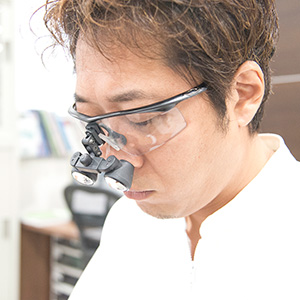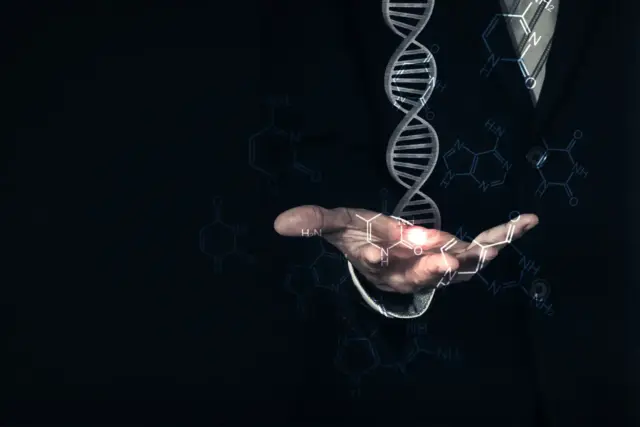
Are you worried that because your father or grandfather had thinning hair, you might have the same problem in the future? We often see information that Male pattern boldness (AGA) is affected by heredity, but surprisingly few people have a correct understanding of how it works and the degree of risk.
This article explains the relationship between Male pattern boldness (AGA) and genetics based on scientific evidence. It also details the constitution that increases the risk of developing the disease and the possibility of prevention through lifestyle, treatment methods, and genetic testing.
Please read to the end as a first step in gaining the right knowledge and choices to protect your hair.
Start treatment for thinning hair at the Osaka Male pattern boldness (AGA) Kato Clinic, which boasts more than 300 visits per month. Find the best treatment with a free counseling session.
Click here to make a reservation on Line.
Adult men’s mistakes in thinning hair are featured in this article.
この記事で説明する内容は?
- Male pattern boldness (AGA) is inherited? Scientific Evidence and Family Influence
- How is the Tendency to thinning hair Inherited?
- Relationship between female hair loss and genetics Characteristics and differences of FAGA (Female pattern boldness)
- Lifestyle habits and Prevention methods
- Can hereditary Male pattern boldness (AGA) be treated?
- Male pattern boldness (AGA) Risk management and Countermeasures starting with genetic testing
- Conclusion

Kentaro Kato, Hospital director of Osaka AGA Kato Clinic group, specializing in comprehensive hair treatment. We specialize in cutting-edge treatments for a variety of clinically proven effective treatments for thinning hair and hair loss. Graduated from Faculty of Medicine, Kinki University in 2001 Worked at plastic surgery of Osaka Medical and Pharmaceutical University Hospital as an anesthesiologist from 2001 to 2005. Worked as a head of plastic surgery at major cosmetic surgery, Hair Transplant Department from 2005 to 2011. Opened Osaka AGA Kato Clinic in 2011. Japan Society of Plastic and Reconstructive Surgery, Regular Member. The Japanese Society for Regenerative Medicine, Regular Member. World Academy of Anti-Aging & Regenerative Medicine, Regular Member.
Male pattern boldness (AGA) is inherited? Scientific Evidence and Family Influence

Male pattern boldness (AGA) is largely influenced by heredity. If you have a family member with thinning hair, is it likely that you will also develop Male pattern boldness (AGA)?
We will lay out the basic mechanisms of Male pattern boldness (AGA) and explain in detail which side of the family, maternal or paternal, is affected and the probability of developing Male pattern boldness (AGA) if there is a family history of the disease.
Which side of the family, maternal or paternal, is affected?
Many people are concerned that their father has thinning hair and so do they, but recent research has shown that Male pattern boldness (AGA) is in fact strongly related to maternal genes.
The reason for this is that the “male hormone receptor gene” associated with Male pattern boldness (AGA) is located on the X chromosome. Because men inherit the X chromosome only from their mothers, they tend to be more susceptible if their maternal side of the family, especially if their “maternal grandfather” had thinning hair.
However, this is only one factor, and it is quite possible to have an increased risk of Male pattern boldness (AGA) even if many people on the paternal side of the family have thinning hair.
The reality is that genes are a complex interplay of multiple factors, so it is not possible to determine “which side of the family is more affected” alone.
What is the probability of developing thinning hair if there is a family member with thinning hair?
If someone in your family has Male pattern boldness (AGA), it is highly likely that you will also develop Male pattern boldness (AGA).
In particular, if the maternal grandfather had thinning hair, the probability is about 75%. If both parents carry the gene for thinning hair, the probability of developing the disease can reach about 90%.
This is because the genes involved in Male pattern boldness (AGA) are inherited in a multifactorial manner. In other words, it is not determined by one gene alone, but a combination of multiple genetic factors that increase the likelihood of developing the disease.
In addition, people at genetic risk tend to develop the disease at a young age, and in many cases, signs can be seen as early as their 20s. That is why it is important to perform a self-check as early as possible if there is a family history of the disease and consult a specialized clinic if necessary.
In addition to genetic factors, some people are more or less prone to thinning hair. The following article explains the characteristics of people who are prone to thinning hair.
How is the Tendency to thinning hair Inherited?

Male pattern boldness (AGA) is not simply a genetic condition, such as “my family has thinning hair, so I will too”. The risk of developing AGA is deeply related to the hormone-related constitutional factors.
The activity of 5-alpha-reductase, which is involved in the production of the hair loss factor DHT, and the genetic characteristics of male hormone receptors, which determine sensitivity to DHT, will be explained in detail.
Male pattern boldness (AGA) is determined by sensitivity to DHT
Male pattern boldness (AGA) is a progressive thinning of hair that is most common in adult men and is characterized by the gradual thinning of hair at the hairline and top of the head, eventually leading to hair loss.
The main cause is the effect of dihydrotestosterone (DHT), a type of male hormone, which shortens the hair growth cycle and prevents hair from growing fully.
DHT is produced when testosterone is converted by the enzyme “5-alpha-reductase”.
There are individual differences in the sensitivity of hair follicles to this DHT, and genetic factors are thought to be deeply involved in these differences.
In other words, Male pattern boldness (AGA) is not just an aging phenomenon, but a medical alopecia involving a combination of hormonal and genetic factors.
Relationship between 5-alpha-reductase activity and DHT production
Dihydrotestosterone (DHT), the main causative agent of Male pattern boldness (AGA), is produced when testosterone is converted by an enzyme called 5-alpha-reductase.
There are two types of 5-alpha reductase, type I and type II. Type II is particularly abundant in hair follicles in the frontal and parietal areas and is strongly associated with Male pattern boldness (AGA).
The higher the activity of this enzyme in the constitution, the more DHT is produced and the stronger the damage to the hair follicles.
And it is believed that this activity level is genetically determined. In other words, if you have a family member who has Male pattern boldness (AGA), there is a high possibility that you have inherited a constitution in which 5-alpha-reductase is active.
Genetic relationships to male hormone receptor sensitivity
DHT causes hair thinning because it binds to “male hormone receptors” in the hair follicles, thereby inhibiting hair follicle growth. How sensitive these receptors are to DHT, or “sensitivity,” varies from person to person, and heredity plays a large role here as well.
In particular, the gene for this receptor “resides on the X chromosome”, so it is believed that there is a large factor determined by inheritance from the mother. If there is a strong tendency toward thinning hair on the mother’s side of the family, there is a possibility that she has inherited a constitution with a high sensitivity to the male hormone receptor, making her more susceptible to DHT.
Although these constitutional factors cannot be determined by appearance, it is a medically well-founded fact that the susceptibility to develop Male pattern boldness (AGA) = genetic inheritance due to one’s constitution.
Relationship between female hair loss and genetics Characteristics and differences of FAGA (Female pattern boldness)

Although thinning hair is often thought of as a problem unique to men, women also have a condition called “Female pattern boldness (FAGA)”. FAGA differs from Male pattern boldness (AGA) in its mechanism of onset and causes, and although there is some genetic influence, multiple factors are involved.
The characteristics and causes of Female pattern boldness (FAGA) and its relationship to hormonal balance and lifestyle, which affect thinning hair in women, will be explained in detail.
Characteristics and factors in the development of FAGA
Female pattern boldness (FAGA) refers to the progressive thinning of hair seen in women. It is characterized by a decrease in overall hair volume, especially at the crown of the head, and tends not to cause a receding hairline as in men.
Multiple factors contribute to the onset of the disease, including;
- Adding to one’s years
- Changes in hormonal balance
- Stress
Especially after menopause, the decline in estrogen is affected, and the relative increase in male hormone activity makes hair thinning more likely.
Why is female hair thinning influenced by genetics?
Genetic influence in Male pattern boldness (AGA) is present, although limited. In particular, inheritance from mother to daughter can be observed.
Because the mechanism by which DHT is affected by male hormones is different in women, the amount of DHT produced itself is lower, and the sensitivity of receptors in the hair follicles is generally not as high as in men.
In addition, no single gene is decisive in the development of Female pattern boldness (FAGA), but it appears due to a combination of factors with the living environment and hormonal status. Therefore, even if your mother or grandmother had a tendency to thinning hair, it does not necessarily mean that you will have the same condition.
Relationship to hormonal balance and lifestyle
Hormonal imbalance is a notable factor in women’s thinning hair.
In particular, hormonal changes during pregnancy, childbirth, menopause, and other life stages have a significant impact on hair, and are factors that trigger the onset of female pattern boldness (FAGA).
Lifestyle habits such as poor nutrition, excessive dieting, lack of sleep, and stress can also lead to deterioration of the scalp environment and impede hair growth. Thus, daily lifestyle management and physical condition care are more important keys than “heredity” in combating hair loss in women.
Lifestyle habits and Prevention methods

Male pattern boldness (AGA) can be inherited through heredity, but its progression can be slowed by improving lifestyle.
This section provides concrete explanations of preventive measures that can be implemented in daily life, including self-checks to recognize the signs of thinning hair, the effects of stress and lack of sleep on hair, dietary habits that regulate the scalp environment, and how to choose the right hair growth products and shampoos.
Early signs of Male pattern boldness (AGA) that can be identified by self-examination
Male pattern boldness (AGA) progresses gradually, so recognizing the early signs is the first step in early action. The following changes may be the beginning of Male pattern boldness (AGA).
- More hair loss on my pillow in the morning
- The skin at the hairline shows through
- Transparent skin on the top of the head
- Hair has become noticeably thinner and thicker
- Difficulty in setting hair
These signs should be observed more carefully if you have a family member with thinning hair. If you feel any discomfort, early professional consultation is a safe bet.
How stress and lack of sleep affect thinning hair and what to do about it
Stress and lack of sleep are not to be overlooked as factors that promote the progression of thinning hair. Especially for those at genetic risk for Male pattern boldness (AGA), these lifestyle factors play a significant role in the onset and progression of the disease.
When stress continues, the body overproduces a hormone called cortisol, which suppresses the function of hair matrix cells and increases the production of DHT (dihydrotestosterone).
In addition, the sympathetic nervous system remains dominant, which worsens blood circulation, making it difficult for necessary nutrients to reach the scalp and inhibiting hair growth.
Lack of sleep similarly has a negative impact on hair. Growth hormone, which is secreted during the deep sleep period after falling asleep, plays an important role in hair repair and growth, and poor sleep quality results in insufficient secretion of this hormone, preventing hair regeneration.
To prevent these effects, the following measures are effective;
- Ensure a steady sleep of about 6-7 hours daily
- Avoid smartphones and caffeine before bedtime to improve sleep quality
- Frequently release stress through bathing, light exercise, deep breathing, etc
- Consciously take time for hobbies and maintain mental well-being
These are measures that can be taken immediately, but the key is to continue to take them.
Managing stress and sleep is not just about hair, but also about fundamental care that balances the entire body. Creating an environment from the inside out is essential to reducing the progression of thinning hair.
Dietary habits and scalp environment
To maintain hair health, it is essential to nourish the body from the inside out as well as from the outside in. Especially for those at risk for Male pattern boldness (AGA), daily diet is a major factor in the progression of thinning hair.
Keratin, the main component of hair, is made from protein. Therefore, the intake of high-protein foods is essential for hair growth.
In addition, vitamins and minerals that support keratin production are also essential. Below is a list of nutrients and their typical foods that maintain hair and scalp health.
- Protein: chicken meat, eggs, natto (fermented soybeans), tofu, yogurt
- Zinc: oysters, lean beef, pumpkin seeds, nuts
- Vitamin B group: liver, pork, green and yellow vegetables, seaweed
- Iron: scallion, komatsuna, hijiki, liver
- Vitamin E and C: almonds, avocados, bell peppers, citrus fruits
Lack of these nutrients can cause poor blood circulation, dryness, and inflammation of the scalp, making it difficult for healthy hair to grow.
On the other hand, excessive intake of sugars and fats and unbalanced diets can cause excessive sebum production, leading to clogged pores and oxidative stress on the scalp. Try to avoid excessive consumption of snacks, junk food, and alcohol.
Dietary habits are also directly related to the scalp environment, which is the foundation of hair. Well-balanced nutrition is a measure against thinning hair that cannot be compensated for by hair growth products or topical medications.
How to select and use hair growth products, shampoos, etc
While there are many hair growth products and scalp shampoos on the market, it is important to choose the right product for your scalp condition and type of thinning hair.
Please refer to the following for tips on choosing a hair growth agent;
- Active ingredients (minoxidil, adenosine, etc.)
- Effects that suit the purpose, such as hair loss control, blood circulation promotion, etc.
- Feeling (stickiness, scent, etc.)
Also, shampoos with too strong a cleansing power should be used with caution, as they tend to damage the barrier function of the scalp. Amino acid-based products and products for sensitive skin are recommended.
Care should also be taken in usage, as the following usage methods may have the opposite effect.
- Use at least twice a day
- Apply directly to dry scalp
Therefore, correct use and continuity are key.
Can hereditary Male pattern boldness (AGA) be treated?

Many people give up on Male pattern boldness (AGA), saying that it is inevitable because of heredity; however, in fact, even Male pattern boldness (AGA) with genetic factors can be controlled or improved by appropriate treatment.
This section explains the necessity of early treatment, how to choose a treatment according to the stage of Male pattern boldness (AGA) medications, as well as typical Male pattern boldness (AGA) medications and injection therapy.
Importance of Early Treatment and Benefits of Clinic Utilization
Male pattern boldness (AGA) is a progressive alopecia, and the longer it is left untreated, the weaker the hair follicles become and the more difficult it becomes to reverse the process. Therefore, it is extremely important to begin treatment in the early stages.
Especially for those who are at genetic risk, moving “as soon as you notice the signs” rather than “when it starts to thin” will greatly affect the future condition of your hair.
Specialized clinics offer the best individualized treatment plan after comprehensively diagnosing the patient’s scalp condition, progression, genetic risk, and other factors through Male pattern boldness (AGA) testing. The ability to receive medically based treatment for cases that cannot be handled with over-the-counter hair growth products alone is a major advantage.
In addition, regular follow-up visits and follow-up with the doctor make it easier to maintain motivation to continue treatment, resulting in a higher rate of improvement.
This article explains how to choose the right hospital for your symptoms and causes.
How to choose treatment according to the progression of Male pattern boldness (AGA)
Male pattern boldness (AGA) has different treatment approaches depending on the stage of progression. In the early stages, the main objective is to “control the progression of hair loss”, and simple treatments using oral and topical medications are effective.
In the mid- to late-stage, treatments to promote hair root regeneration and to thicken already thin hair are added, and more often multiple methods are combined. In addition, treatments to improve the environment of the scalp and promote blood circulation are also important.
Clinics use scales (such as the Norwood Classification) to determine the degree of progression of the disease and propose a treatment plan that is suited to the current situation and the patient’s goals.
The first and foremost basic Male pattern boldness (AGA) medications are a combination of oral and topical medications.
Internal medicine
Male pattern boldness (AGA) is used based on many years of clinical data to suppress the progression of Male pattern boldness (AGA) and to promote hair growth. In particular, its effectiveness has been recognized in hereditary Male pattern boldness (AGA), and many clinics use it as the basis for treatment.
- Finasteride (Propecia)
Suppresses 5-alpha-reductase type II and DHT production. Superior in suppressing the progression of the disease. - Dutasteride (Zagallo)
It acts on both type I and type II 5-alpha-reductase and is expected to have a broader effect than finasteride.
Topical medicine
- Minoxidil
It promotes blood flow to the scalp and helps activate hair matrix cells. It is sometimes prescribed for women as well as men.
Although therapeutic drugs are effective when continued over a long period of time, it is important to use them in consultation with a doctor because of side effects and individual differences. Discontinuation or excessive use at one’s own discretion can be counterproductive, so please continue treatment while undergoing regular medical examinations.
Injectable (Mesotherapy/HARG Therapy)
For cases where oral or topical treatment alone is not effective enough, or for those who desire more aggressive hair regrowth, there is the option of injection therapy.
These are advanced treatments that deliver active ingredients directly to the deeper layers of the scalp to reactivate hair matrix cells and promote hair regeneration. The major advantage of this treatment is that it is expected to be effective even in cases where hair follicles have atrophied due to genetic hair loss.
Typical injection therapies include;
- Mesotherapy
Active ingredients such as minoxidil, growth factors, and vitamins are delivered directly to the scalp by injection or special equipment to promote hair growth. - HARG Therapy
A regenerative medical approach that aims to regenerate hair follicles and grow hair by injecting growth factors derived from human stem cells.
These treatments do not produce dramatic results in a single session, but rather require several to a dozen or more treatments on an ongoing basis to achieve gradual improvement. It is also important to understand that the cost of these treatments is high because they are free treatments, and that there is pain during the injection process.
Male pattern boldness (AGA) Risk management and Countermeasures starting with genetic testing

In recent years, it has become possible to determine the risk of developing Male pattern boldness (AGA) and the likelihood of treatment efficacy at the genetic level in advance.
This section explains what genetic testing can reveal and how to formulate optimal treatment strategies based on the test results.
What is a genetic test to visualize Male pattern boldness (AGA) risk?
It is now known that multiple genetic factors are involved in the development of Male pattern boldness (AGA).
Genetic testing determines whether you are likely to develop Male pattern boldness (AGA) in the future by examining the following main factors.
- 5-alpha-reductase activity-related genes: activity levels of enzymes involved in the production of DHT
- Male hormone receptor-related genes: sensitivity of hair follicles to DHT
- Drug sensitivity genes: how well therapeutic drugs (finasteride, minoxidil, etc.) work
By examining these items, you can obtain information in advance about how much risk you are at for thinning hair and which treatment is right for you. The examination can be performed simply by rubbing the inside of the cheek with a cotton swab, and is painless and burdensome.
For those who are concerned about Male pattern boldness (AGA), especially if it is genetic, “visualizing” their concerns is the first step toward prevention and countermeasures.
How to take a genetic test is featured in this article.
Individualized treatment strategies based on test results
The information obtained from genetic testing is not just reference data, but is important material for determining the actual course of treatment.
For example, if the patient is found to be susceptible to DHT, a strategy that prioritizes oral treatment with finasteride or dutasteride would be effective.
On the other hand, if the patient is diagnosed to be highly susceptible to minoxidil, an approach focusing on topical or injection therapy may be appropriate.
Furthermore, by taking into account the speed of progression, age, and lifestyle, a customized treatment plan can be developed. This is a major advantage over standardized treatment, which is more effective and minimizes the risk of side effects.
Even for those who have not yet developed the disease, knowing in advance “the level of risk” can lead to early measures such as lifestyle improvement and regular scalp checks for the purpose of prevention.
Conclusion
Male pattern boldness (AGA) is strongly related to genetic factors, and many people may be concerned about having a family member with thinning hair. However, even if a person is prone to thinning hair, it is possible to halt the progression of the disease through lifestyle modification and early treatment.
Genetic risks such as the activity of 5-alpha-reductase and sensitivity to male hormone receptors can be known in advance and are being visualized through genetic testing. Rather than starting countermeasures after the onset of the disease, correctly understanding your constitution and starting with what you can do now, one at a time, will greatly affect the future condition of your hair.
If you are concerned about your own risk, we recommend that you start scientifically based countermeasures through consultation and examination at a Male pattern boldness (AGA) clinic.
If you are suffering from Male pattern boldness (AGA), we recommend early consultation with a doctor. At the Osaka Male pattern boldness (AGA) Kato Clinic, we will work closely with you to find the best treatment option for your concerns.
Click here to make an appointment on Line.











